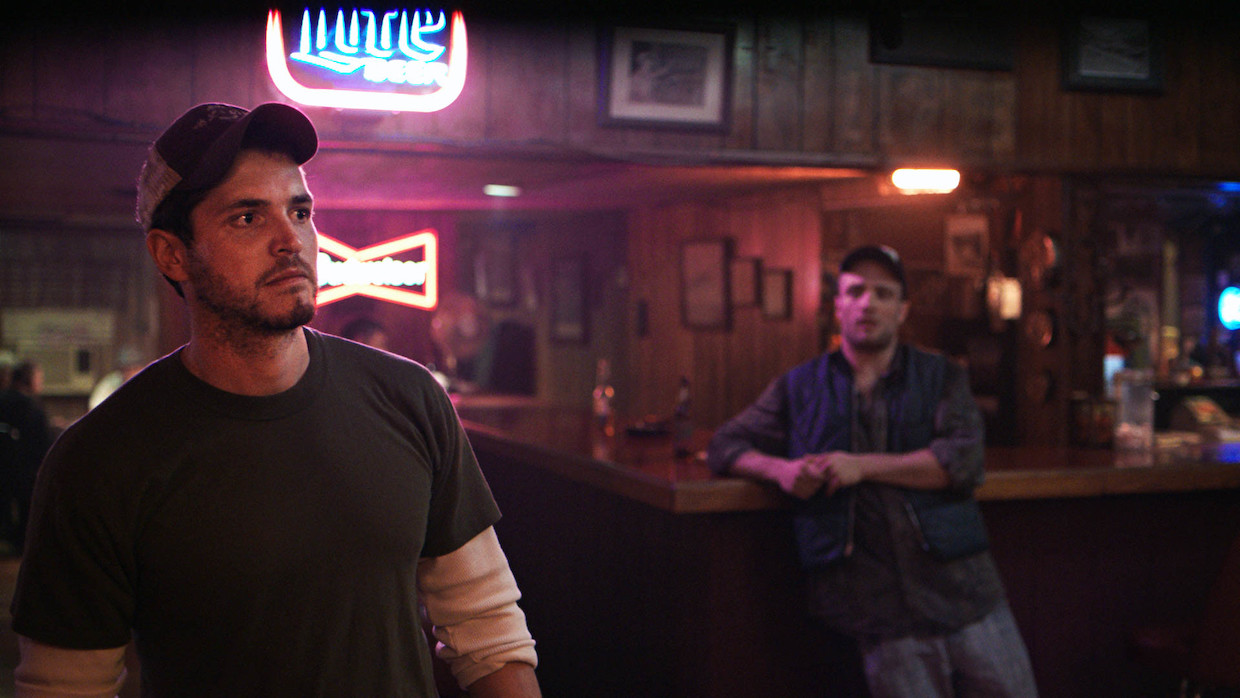 Back to selection
Back to selection
“We Wanted It to be Natural, Believable”: DP Declan Quinn on The Evening Hour
 Philip Ettinger and Cosmo Jarvis appear in The Evening Hour by Braden King (courtesy of Sundance Institute)
Philip Ettinger and Cosmo Jarvis appear in The Evening Hour by Braden King (courtesy of Sundance Institute) In rural Appalachia, Cole (Philip Ettinger), a health aide working at a nursing home, helps make ends meet by selling off excess pills from the townspeople to other local buyers. While Cole doesn’t see himself as perpetuating a culture of addiction, he finds himself in the center of conflict between the town’s drug kingpin when a childhood friend comes back to town and encourages Cole to assert his dominance in the local drug trade. Cinematographer Declan Quinn discusses the inspiration and technique that went into Braden King’s The Evening Hour.
Filmmaker: How and why did you wind up being the cinematographer of your film? What were the factors and attributes that led to your being hired for this job?
Quinn: I liked the script and Braden’s previous film, Here. Braden liked some films I had shot in the past. We met and agreed about the general approach to The Evening Hour.
Filmmaker: What were your artistic goals on this film, and how did you realize them? How did you want your cinematography to enhance the film’s storytelling and treatment of its characters?
Quinn: I wanted the film to feel authentic—that the characters were at home in their houses, trailers, cars, bars and the big autumnal landscape of Kentucky.
Filmmaker: Were there any specific influences on your cinematography, whether they be other films, or visual art, or photography, or something else?
Quinn: Braden and I are both fans of still photography, so we could short-hand a conversation about light or composition by referencing an image from Robert Frank or Dianne Arbus, for example. There was a book of Russian paintings from the late 1800’s that also inspired us—a similarity between the autumn light and landscape of Kentucky and the Russian landscapes.
Filmmaker: What camera did you shoot on? Why did you choose the camera that you did? What lenses did you use?
Quinn: We used the Arri Alexa Mini with re-housed Super Baltar lenses.
Filmmaker: Describe your approach to lighting.
Quinn: On this film, we wanted it to be natural, believable. Empathetic to the characters. I tried to stay away from clichés like hard shafts, floor bounces, back light. Also tried to use color contrast in the bar scenes to give some depth and heighten the tensions.
Filmmaker: What was the most difficult scene to realize and why? And how did you do it?
Quinn: There is a lengthy dialogue scene written to take place between Cole and Terry in a quarry at night. Given our limitations on lighting gear and time in general, we had difficulty deciding how to approach it. We ended up at the base of a beautiful rock face and decided to shoot a portion of the scene at sunset with a campfire roaring in the background. That way we knew where we were geographically, then transition to night at the campfire. The main scene is at night and is all by campfire light. But showing the location first at dusk I felt we had license to do a whole long dialogue scene in firelight with essentially no background—and not have it feel like we were suddenly in a Beckett play. The earlier dusk scene informed us enough that we are not asking ourselves where we are. Simple enough in the end. We got our pivotal dialogue scene at night.
Filmmaker: Finally, describe the finishing of the film. How much of your look was “baked in” versus realized in the DI?
Quinn: There was a lot done in the DI. We Shot ArriRaw. We also used LiveGrain to give a filmic patina to the work.
TECH BOX:
Film Title: The Evening Hour
Camera: Arri Alexa Mini
Lenses: Super Baltars
Lighting: Mainly LED units
Processing: Digital
Color Grading: DI color by Harbor Pictures
